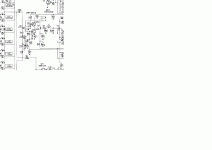Also at least 1/3 the overall gain must be coming from its head amp to dominate any full preamp's noise performance.
Yes, now that I think that's a good point.
Thank you also, I think from now I can make my hybrid JFET/triode input with a different valve.
That's in dB not to forget I clarify.
The idea of the common grid stage only contributes its own noise regardless its gain is enough to make me think a little, clarifications are welcome.
Since entering the forum, every day I learn something new, thanks again.
Vacuum Tube Amplifiers-G.E.Valley, H. Wallman
M.I.T. Radiation Laboratory Series 18
This book is a clear example that any subject can be as dark as desired.
At first I thought that my brain is not working properly, but at page 253, mentioning Chebyshev polynomials, author/s make reference to Courant-Hilbert, "Methoden der Mathematischen Physik"
Funny thing, the last is an extraordinary book, useful and readable, and I would say even better than his counterpart by Morse-Feshbach.
Chebyshev polynomials are so common, and can be found in any respectable book, why need a book in German?
That's I call "Mathematical snobism"
No, given the same valve and bias a cascode has exactly the same gm as common-cathode. The difference in gain comes from the different output arrangements. The cascode largely isolates the lower valve from anode feedback, so the effective mu is raised to pentode-like figures. The raw signal current and noise current generated by the lower triode are the same as for common-cathode, but there is no anode feedback to then reduce them. The signal-noise ratio stays the same, except for a little extra noise from the upper triode - usually negligible.
I repeat the question, if you haven't the answer, it's fine, sorry to ask again.
So, what about upper triode's noise ?
Why is usually negligible ?
Merlinb and Salas gave me good advice, but I need equations.
Or at least a good reading reference.
Will this as a message in a bottle?
Last edited:
Because the noise from the lower device gets amplified so that it swamps the noise of the upper device. That's all there is to it.So, what about upper triode's noise ?
Why is usually negligible ?
Merlinb and Salas gave me good advice, but I need equations.
Or at least a good reading reference.
If you haven't understood the previous posts then you probably need to learn more about fundamental noise theory. You can then derive your own equation (although I doubt you will ever need to use it...). Find any book on electrical noise. I like Low-Noise Electronic System Design by C. D. Motchenbacher
Because the noise from the lower device gets amplified so that it swamps the noise of the upper device. That's all there is to it.
That I understood, when you kindly explained to me, thanks again.
If you haven't understood the previous posts then you probably need to learn more about fundamental noise theory. You can then derive your own equation (although I doubt you will ever need to use it...). Find any book on electrical noise. I like Low-Noise Electronic System Design by C. D. Motchenbacher
I need equations to design properly, especially in the selection of the upper triode of the cascode, the book of M.I.T. is horrible and will only help me a bit in terms of concepts. It's so hard to write R, gm, etc. ?
I could make a "translation in the notation", but there are many things that the authors draw from the galley.
Thanks for the reference, I will do my best to read, if I can get it.
I need equations to design properly, especially in the selection of the upper triode of the cascode, the book of M.I.T. is horrible and will only help me a bit in terms of concepts. It's so hard to write R, gm, etc. ?
Then perhaps: Amplifying Devices and Low-pass Amplifier Design by E. M. Cherry, D. E. Hooper
Then perhaps: Amplifying Devices and Low-pass Amplifier Design by E. M. Cherry, D. E. Hooper
This I've wanted since recommended it ruffrecords, thanks again for your patience.
Because the noise from the lower device gets amplified so that it swamps the noise of the upper device. That's all there is to it.
It is a very poor answer. Upper triode may have less, equal or higher nose than the lower amplified by the upper.
I believe Popilin's question is still open.
Cascodes has been used in front end of FM and TV tuners because of the low noise contributions (between other so important particularities), I also have seen it in some ham radio receivers, because of it important property (In fact, my Yaesu FT 767 has one inside it made with two FET´s). It is clear it laks the partition noise as pentodes have, but WHY is low noise, is still a doubt.
Attachments
- Status
- This old topic is closed. If you want to reopen this topic, contact a moderator using the "Report Post" button.
- Home
- Amplifiers
- Tubes / Valves
- 12AU7 Phono Stage
